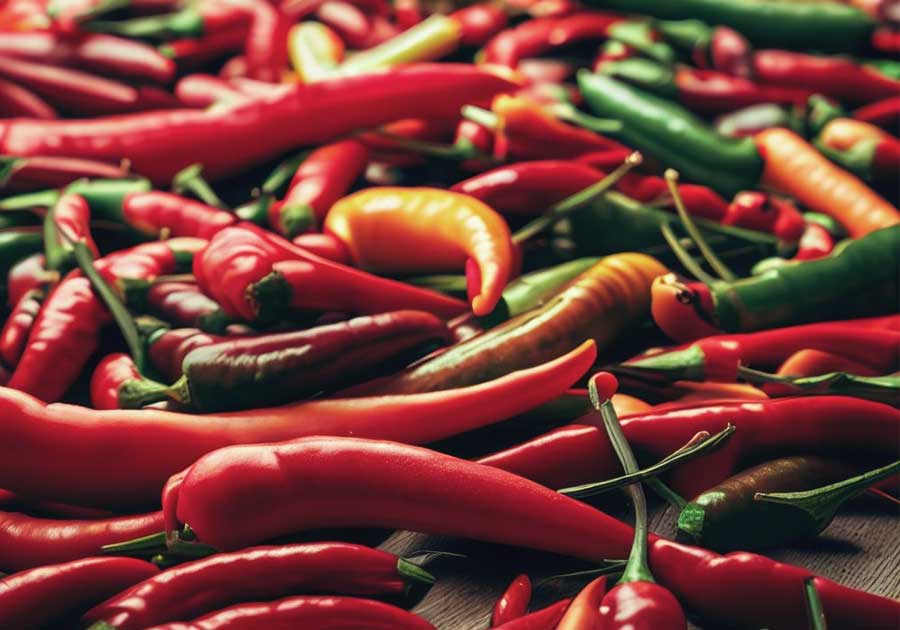Thai food is renowned worldwide for its bold and vibrant flavours, but one characteristic stands out prominently: spiciness. The question, “Is Thai food spicy?” often leads to discussions about the varying levels of heat found in Thai cuisine. The truth is, while there are a lot of spicy dishes in Thailand, not all Thai Food is spicy!
People Always Ask Is Thai Food Spicy!
Thai cuisine is celebrated for its harmonious balance of four fundamental flavours: sweet, salty, sour, and spicy. At the heart of this exquisite balance lies the element of spiciness—a dynamic force that adds depth, complexity, and a thrilling adventure to every bite.
The inclusion of spiciness in Thai cuisine is not merely about setting taste buds ablaze; it’s an art of flavour layering and balance. The choice of chilli pepper and its careful manipulation is akin to a painter selecting colours for a masterpiece. From the searing intensity of Bird’s Eye Chilies, known as “Phrik Khi Nu,” to the milder yet vibrant hues of Thai Red Chilies, or “Phrik Daeng,” every chilli variety plays a role in the culinary composition.
While Thailand is renowned for its fiery dishes, it’s important to note that not all Thai cuisine is blistering hot. In fact, Thai culinary traditions offer a spectrum of spiciness levels, ensuring there’s something to satisfy every taste preference. Below, you’ll find a list of some classic Thai dishes that are both spicy and non-spicy.
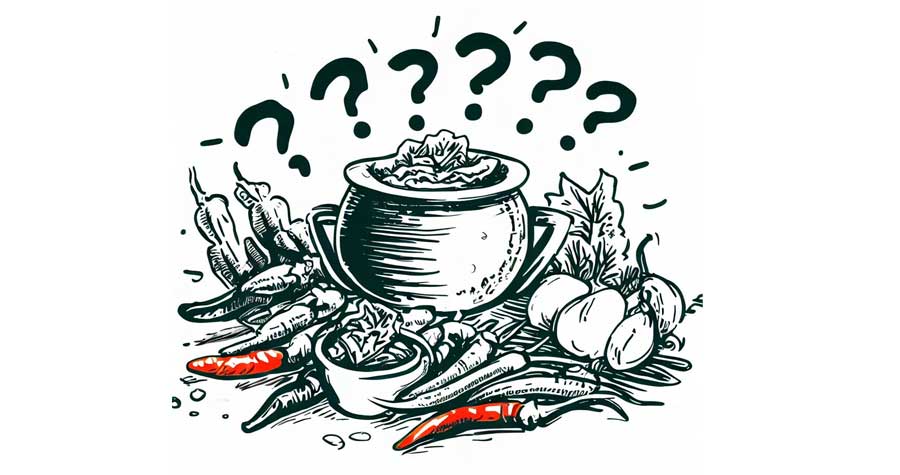
What Type of Chillies Do They Use in Thailand?
Thailand is renowned for its diverse array of chilli varieties, each contributing its unique character to the country’s rich culinary heritage. At the pinnacle of Thai spiciness is the Bird’s Eye Chili, known locally as “Phrik Khi Nu,” a fiery and tiny pepper that packs a potent punch. Thai Red Chilies, or “Phrik Daeng,” are slightly milder but remain a staple for their vibrant colour and substantial heat. For a milder touch, Thai Green Chilies, or “Phrik Khieo Wan,” are favoured in green curry pastes and provide a flavourful kick without overwhelming spice.
Beyond these common varieties, the Thai chilli spectrum includes chilli peppers like Prik Chee Fah, which offers a moderate level of spiciness, and Prik Yuak, mild yellow chillies mainly used for their vibrant colour. The versatile Prik Pao, or Thai Chili Paste, blends dried chillies with shrimp paste, enhancing both heat and complexity. Additionally, dried red chillies (Prik Haeng) and Prik Namprik, which are grilled or roasted for aroma, contribute to Thai cuisine’s multifaceted spiciness. These chilli peppers, skillfully wielded by Thai cooks, are the building blocks of a cuisine celebrated for its harmonious balance of sweet, salty, sour, and spicy flavours.
The table below provides an overview of Thai chilli peppers, with the spiciest varieties listed at the top and milder ones towards the bottom. Keep in mind that spiciness can vary among individual peppers.
| Chili Pepper | Thai Name | Description and Usage |
|---|---|---|
| Bird’s Eye Chili | Phrik Khi Nu | Commonly used for both heat and colour, often sliced or chopped. |
| Thai Red Chili | Phrik Daeng | Milder than red chillies, used in green curry paste and more. |
| Thai Green Chili | Phrik Khieo Wan | Mild yellow chillies used mainly for color in yellow curry pastes. |
| Prik Chee Fah | Long and moderately spicy, used in stir-fries and salads. | |
| Prik Yuak | A paste of dried chilies and shrimp paste, used for heat & flavour. | |
| Prik Pao | Thai Chili Paste (Jam) | Slightly milder than Bird’s Eye chillies, used in Thai salads. |
| Prik Haeng | Dried Red Chilies | Soaked in water before adding to curries, stir-fries, and sauces. |
| Prik Namprik | Grilled or roasted for aroma, used in various dishes. | |
| Prik Kee Noo Suan | Slightly milder than Bird’s Eye chilies, used in Thai salads. | |
| Prik Haeng Ped | Dried Chili Flakes | Used as a condiment to add spiciness to dishes. |
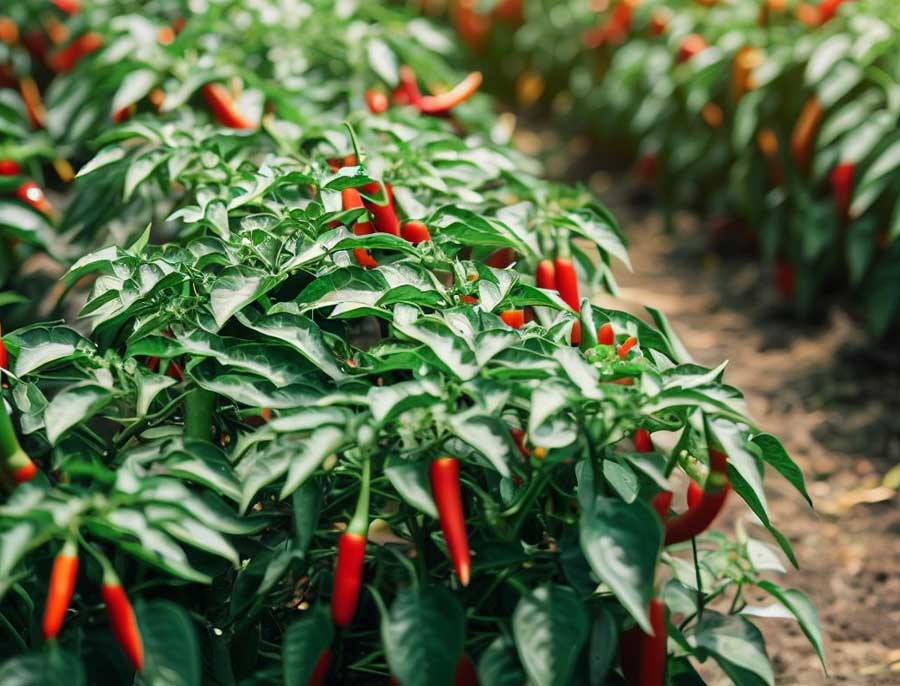
5 Spicy Thai Dishes
1. Tom Yum Goong
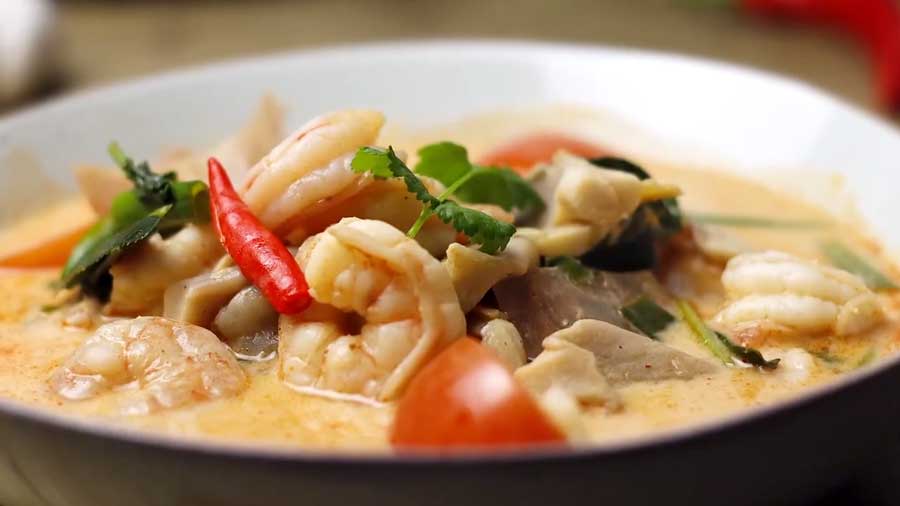
This classic Thai hot and sour soup is known for its intense flavours and fiery heat. It features shrimp (or other proteins) cooked in a broth infused with lemongrass, galangal, lime leaves, fish sauce, and a generous amount of Thai bird’s eye chilli peppers. The result is a spicy and aromatic soup that’s both refreshing and fiery.
2. Green Curry (Gaeng Keow Wan)
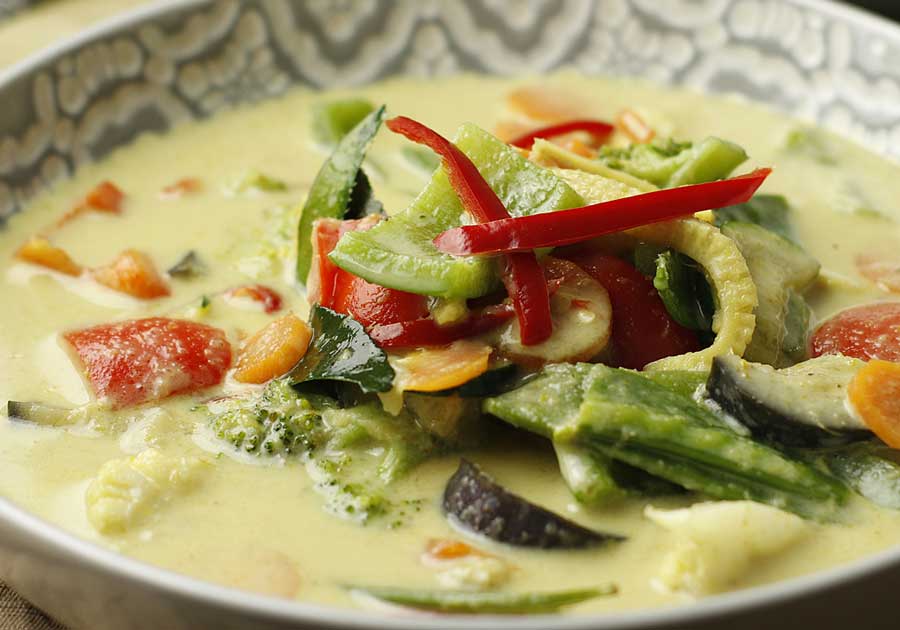
Green curry is a popular Thai dish that packs a spicy punch. The green colour comes from the use of green chillies and fresh herbs like basil, and coriander to make the green curry paste. It’s typically made with coconut milk, chicken or other proteins, and vegetables, creating a creamy yet intensely spicy curry.
3. Som Tum (Papaya Salad)
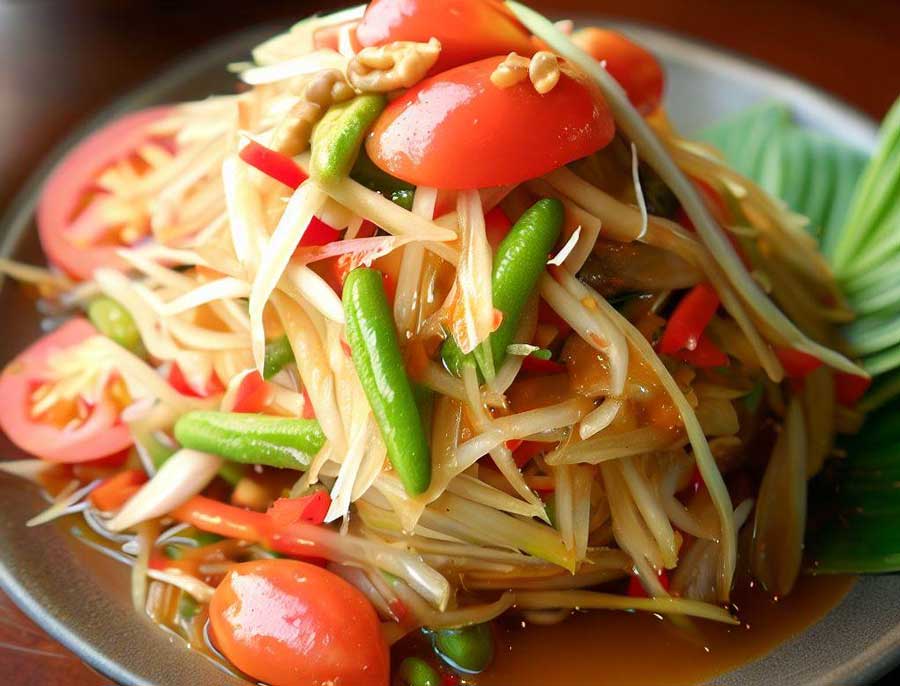
Som Tum is a spicy and tangy Thai salad made with shredded unripe papaya, lime juice, fish sauce, sugar, and chilli peppers. The combination of these ingredients creates a delightful balance of sweet, salty, and spicy flavours. It’s a popular street food dish in Thailand.
4. Pad Kee Mao (Drunken Noodles)
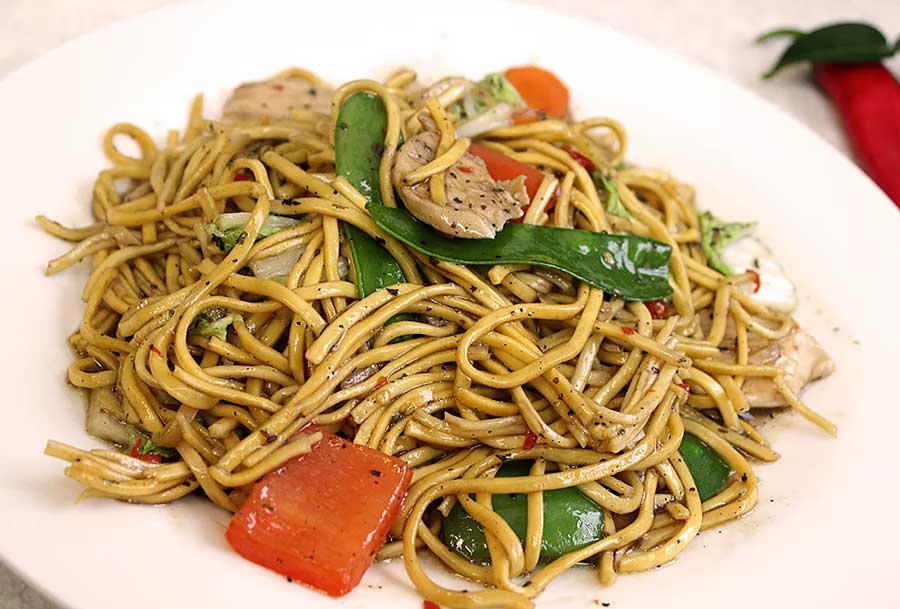
This stir-fried noodle dish is known for its fiery kick. It usually includes wide rice noodles, Thai basil, garlic, soy sauce, fish sauce, and a liberal amount of chilli peppers. It’s called “drunken noodles” because it’s often enjoyed with a cold beer to help counteract the heat.
5. Laab (Spicy Thai Salad)
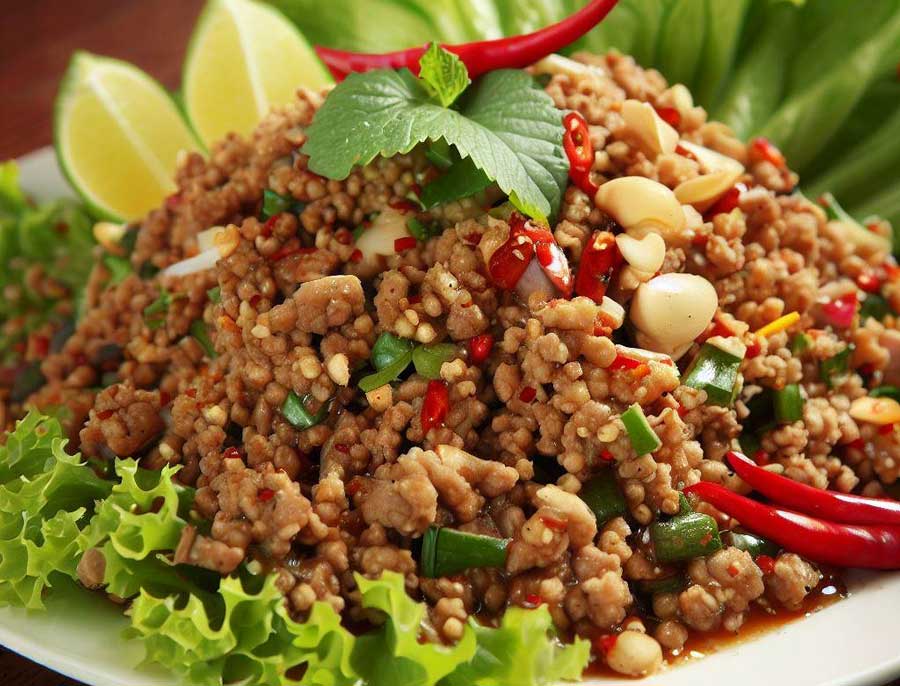
Laab is a minced meat salad that hails from the northeastern region of Thailand. It’s made with ground meat (often pork or chicken), toasted rice powder, lime juice, fish sauce, and a blend of fresh herbs and chilli peppers. The heat in this dish can be adjusted to your preference, but it’s traditionally quite spicy.
Non Spicy Thai Food – 5 Dishes That Are Not Spicy
1. Pad Thai
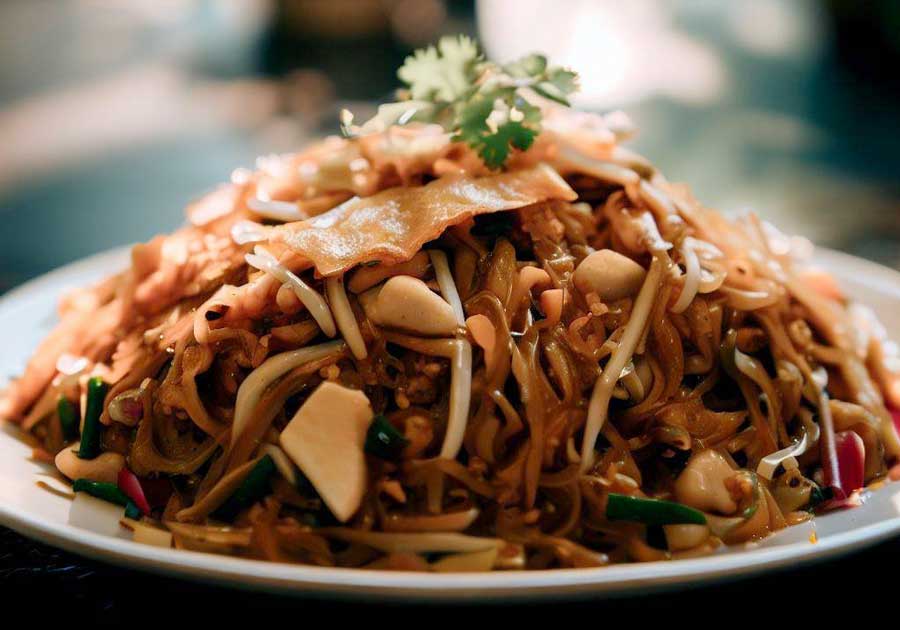
Pad Thai is one of Thailand’s most iconic dishes. It features stir-fried rice noodles with eggs, tofu or shrimp, bean sprouts, and crushed peanuts. The sauce is a harmonious blend of sweet, sour, and savoury flavours, making it a popular choice for those who prefer mild spice levels.
2. Panang Curry

Panang curry is a milder and creamier Thai curry that’s beloved for its rich flavour. It’s typically made with your choice of protein (often beef, chicken, or shrimp), cooked in a thick and aromatic curry paste that includes ingredients like coconut milk, kaffir lime leaves, and crushed peanuts. The result is a deliciously indulgent and mildly spiced curry.
3. Massaman Curry

Massaman curry is a rich and mildly spiced Thai curry from the south of Thailand with Muslim origins. It’s typically made with tender chunks of beef or chicken, potatoes, onions, and roasted peanuts. The curry sauce is creamy and flavoured with a blend of aromatic spices like cinnamon, cardamom, and cloves.
4. Chicken and Cashew Nuts (Gai Pad Med Mamuang)

This stir-fry dish features tender pieces of chicken, cashew nuts, bell peppers, and onions. The sauce is a combination of oyster sauce, soy sauce, and a touch of sweetness. It’s a savoury and slightly sweet dish with a delightful crunch from the cashews.
5. Pineapple Fried Rice

Pineapple fried rice is a colourful and tropical dish that combines fragrant jasmine rice with pineapple chunks, shrimp or chicken, cashews, and vegetables. It’s seasoned with a blend of soy sauce and fish sauce, creating a balanced and flavorful meal with a touch of sweetness from the pineapple.
Is Thai Food Spicy – FAQ
1. Is Thai food spicy?
No, not all Thai food is spicy. While Thai cuisine is known for its spiciness, there are many Thai dishes that are mild or have a moderate level of spiciness. Thai cuisine offers a wide range of flavours, from sweet and savoury to sour and spicy.
2. How spicy is Thai food compared to other cuisines?
Thai food is generally spicier than many Western cuisines but can vary greatly within Thai cuisine itself. Some dishes, like green curry or Tom Yum soup, are known for their high spiciness levels, while others, like Pad Thai, are typically milder.
3. Are there non-spicy options in Thai restaurants for those who can’t tolerate spice?
Yes, most Thai restaurants offer non-spicy options, and you can often request dishes to be prepared with little to no chilli peppers. Many Thai dishes can be customized to suit your spice tolerance.
4. How can I tell if a Thai dish is spicy on the menu?
Look for menu items that have the word “spicy” or “hot” in their names or descriptions. Thai menus may also use chilli pepper symbols or numbers to indicate the spiciness level of a dish.
5. What are some common Thai ingredients that add spiciness to dishes?
Chilli peppers, particularly Bird’s Eye Chilies, are the primary source of spiciness in Thai cuisine. Thai chilli paste (Prik Pao) and chilli sauce (Sriracha) are also commonly used to add heat.
6. How can I reduce the spiciness of a Thai dish if it’s too hot for me?
You can ask for less chilli pepper or chilli sauce when ordering. Drinking water or consuming dairy products like yoghurt can help alleviate the heat. Adding more rice to your meal can also reduce the spiciness.
7. Is spiciness an essential part of Thai food’s flavour profile?
Yes, spiciness is one of the four fundamental flavours in Thai cuisine, along with sweet, salty, and sour. It’s an integral part of many Thai dishes and is used to create a harmonious balance of flavours.
8. Are there regional variations in spiciness within Thai cuisine?
Yes, there are regional differences in spiciness. For example, Southern Thai cuisine is known for its exceptionally spicy dishes, while Northern Thai cuisine tends to be milder and uses more aromatic spices.
9. Can I enjoy Thai food if I can’t tolerate spicy food?
Absolutely! Thai cuisine offers a diverse range of dishes, and many of them are not particularly spicy. You can explore milder options like Pad Thai, Massaman Curry, or mango sticky rice for dessert.
10. Is spiciness in Thai food adjustable to personal preference?
Yes, Thai food is very accommodating to personal taste. Most Thai restaurants are willing to adjust the spiciness level of a dish according to your preference, whether you prefer it mild, medium, or fiery hot.

